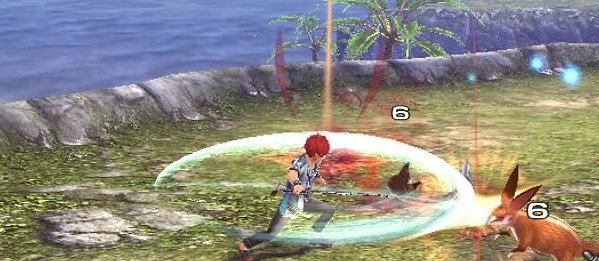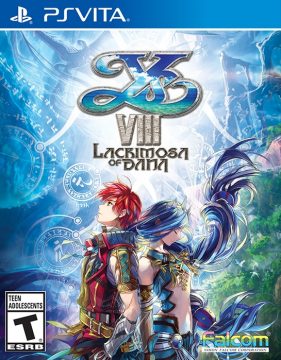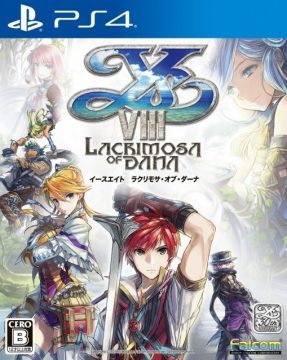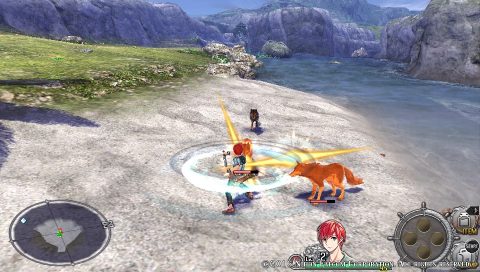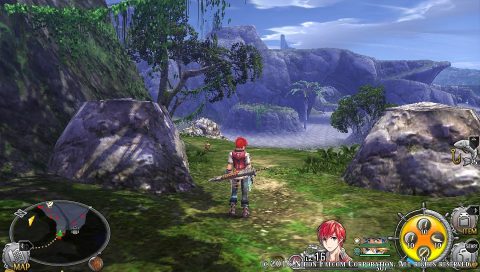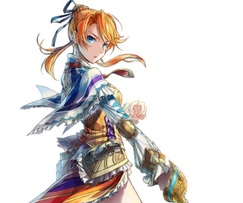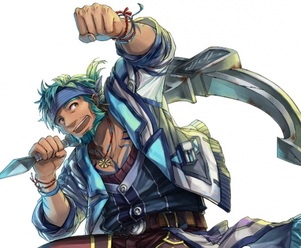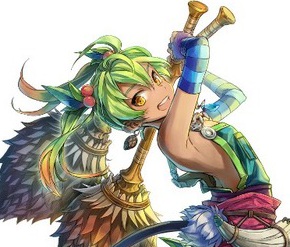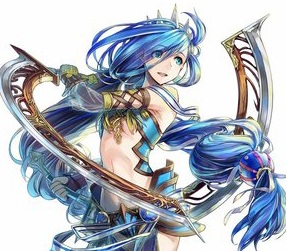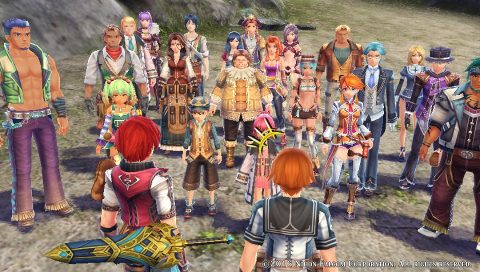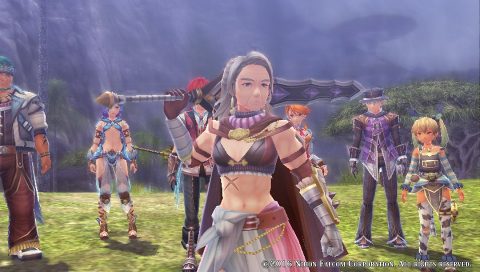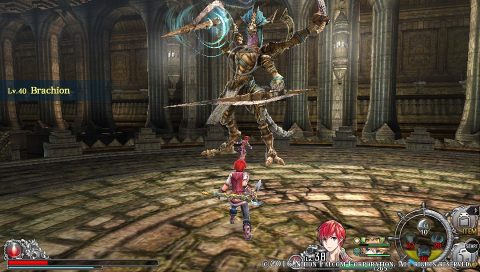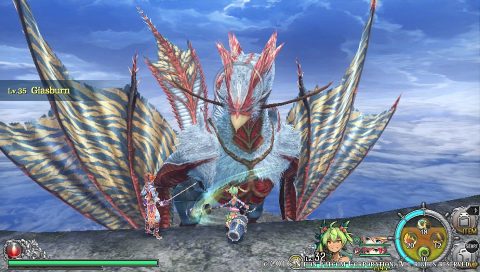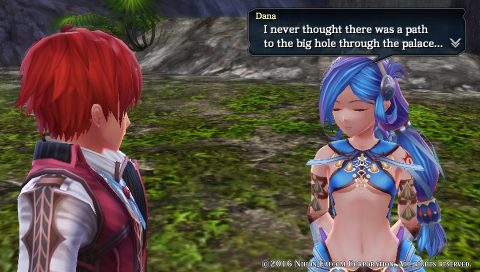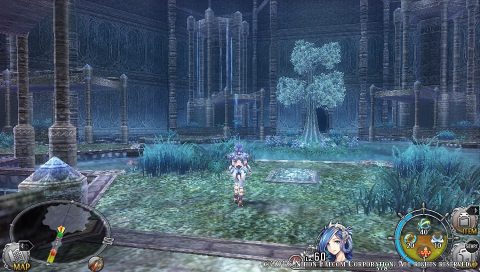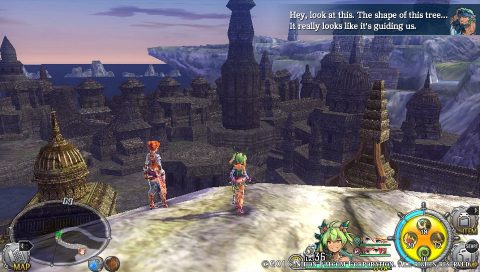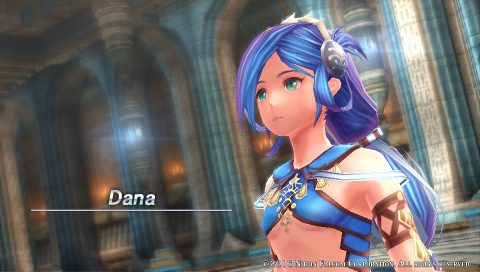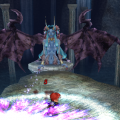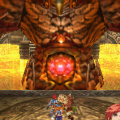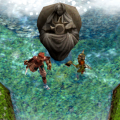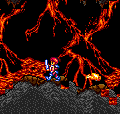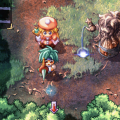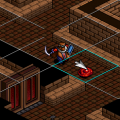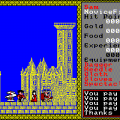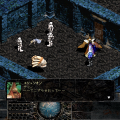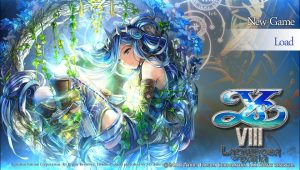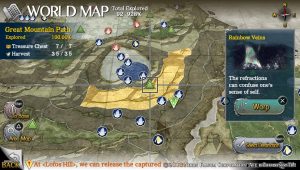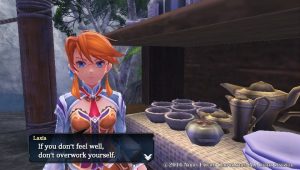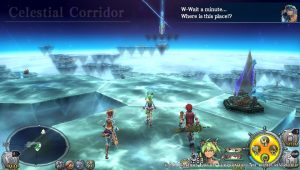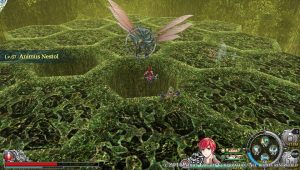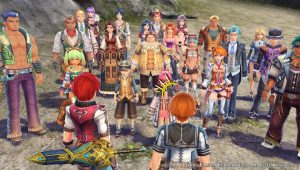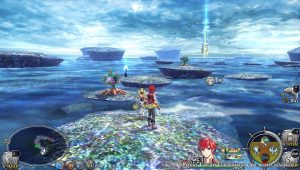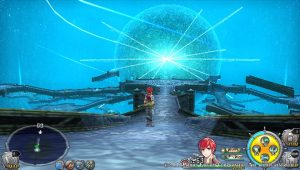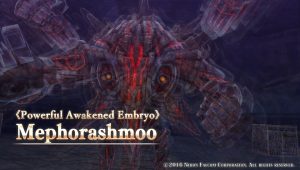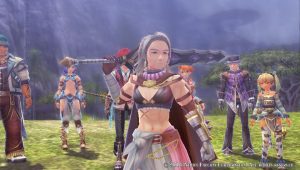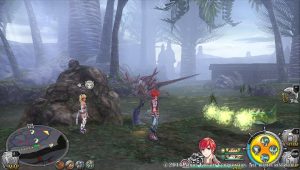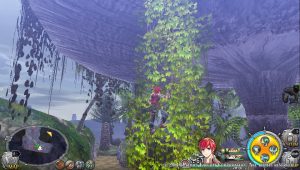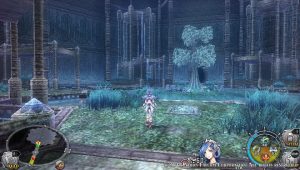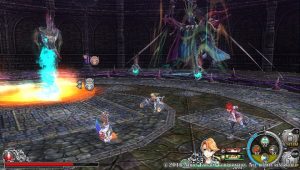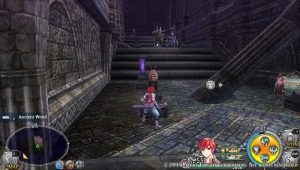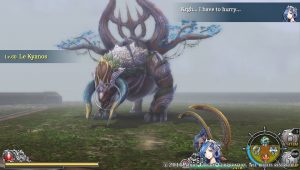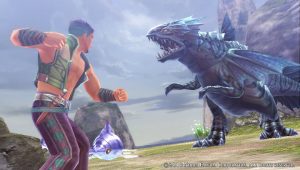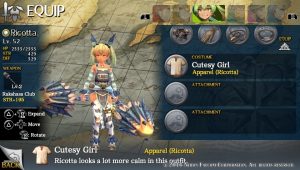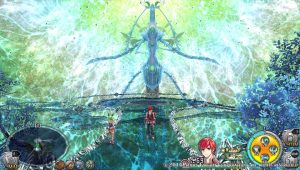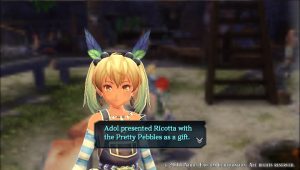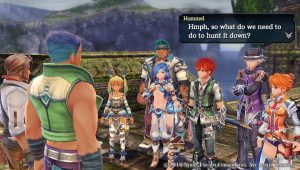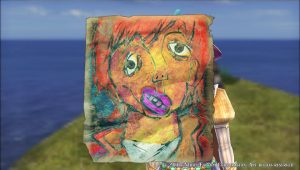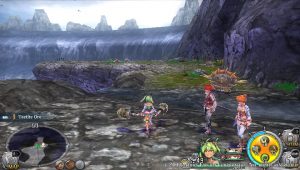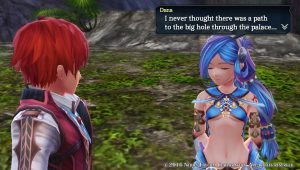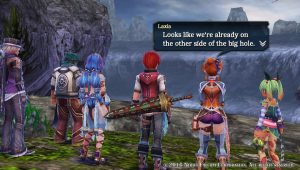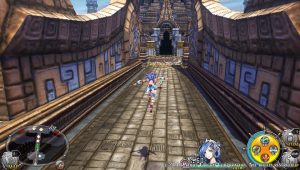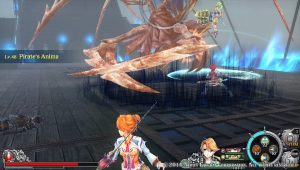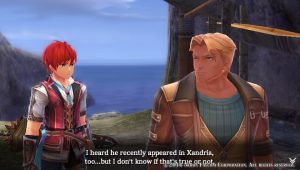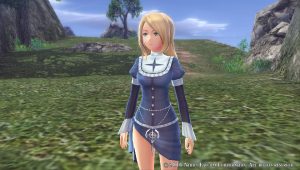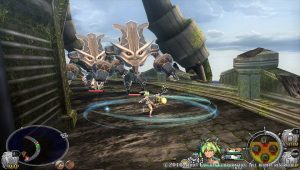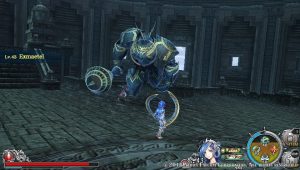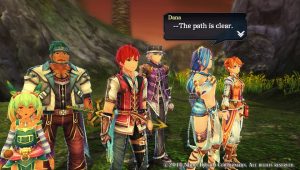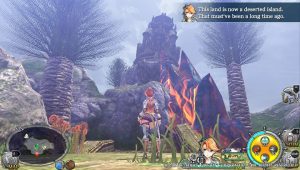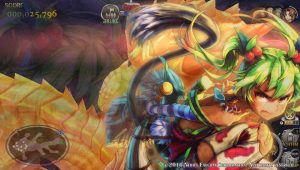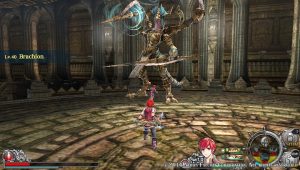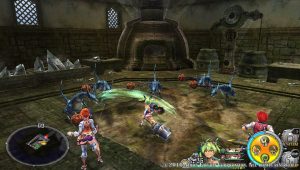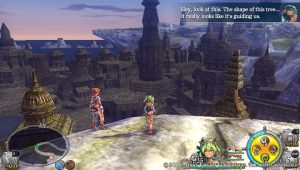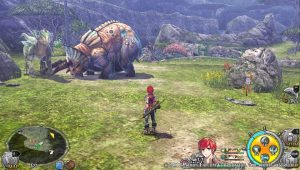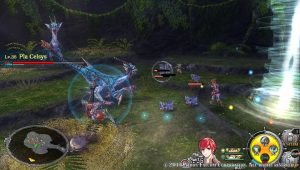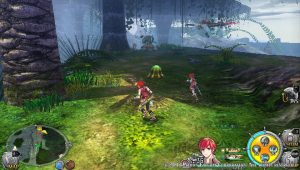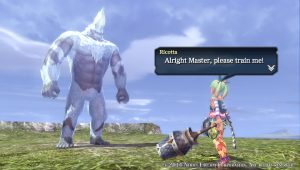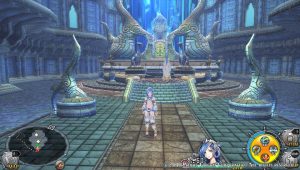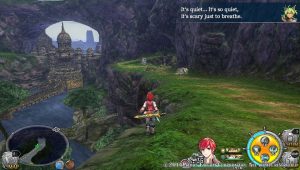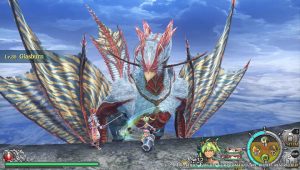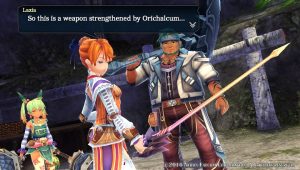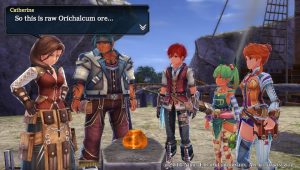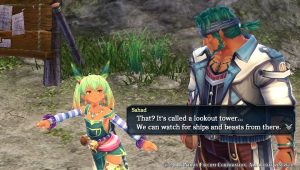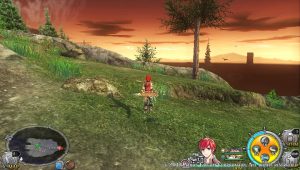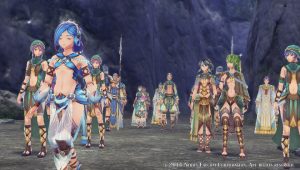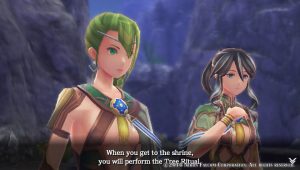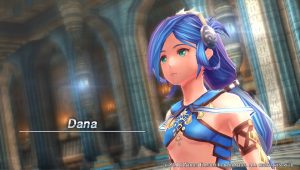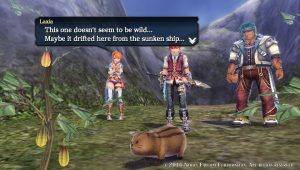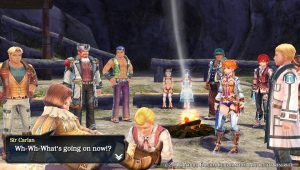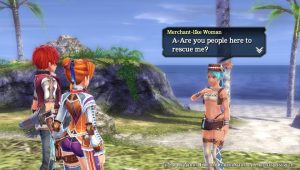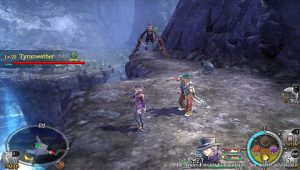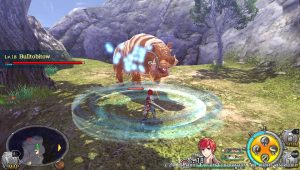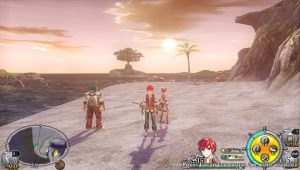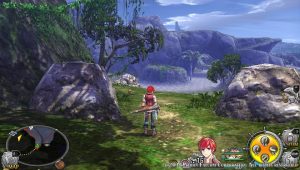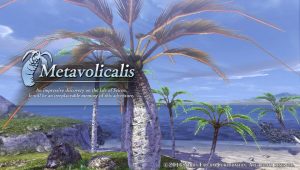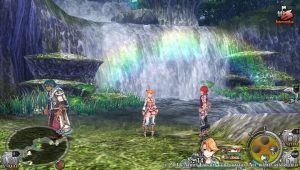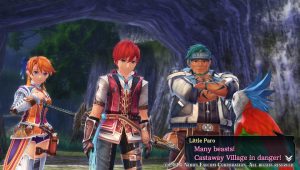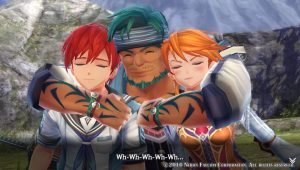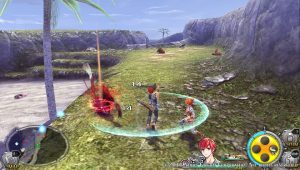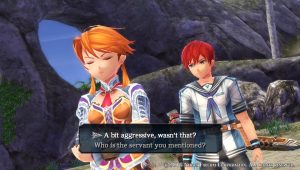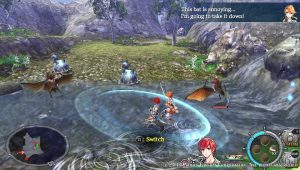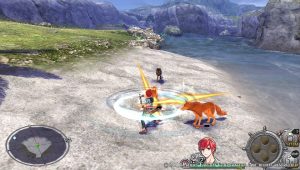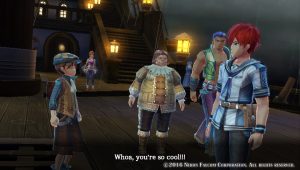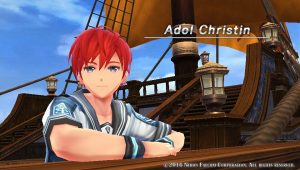- Ys Book I & II
- Ys III: Wanderers from Ys
- Ys IV: Dawn of Ys / Mask of the Sun
- Ys V: Ushinawareta Suna no Miyako Kefin
- Ys VI: The Ark of Napishtim
- Ys: The Oath in Felghana
- Ys Origin
- Ys Seven
- Ys: Memories of Celceta
- Ys VIII: Lacrimosa of Dana
- Lacrimosa of Dana (Novel)
- Ys IX: Monstrum Nox
- Ys Strategy
- Ys: The Call of Solum
- Ys vs. Sora no Kiseki: Alternative Saga
- Ys (Anime)
Despite being their most famous franchise, Falcom has often taken its time to expand the core entries of the Ys series with new sequels. There were eight years between Ys V (1995) and Ys VI (2003), six years between that and Ys Seven (2009), and finally seven years before that and Ys VIII: Lacrimosa of Dana (2016). (Memories of Celceta, released in the intervening years, is a remake of Ys IV from a plot standpoint.) Curiously, Ys VIII is actually a prequel, taking place between the fifth and sixth entries – in other words, after he left Xandria but before he got stranded in the Canaan Vortex. Incidentally, it also involves getting stuck on an island, though the concept is a little bit different here.
The game begins on the Lombardia, a luxurious ship that’s attacked by a gigantic squid creature, completely destroying the vessel and washing up everyone on the mysterious island of Seiren. Adol and the few compatriots he manages to find establish a small village and begin searching for the remaining castaways, in addition to figuring out a way to escape. Not only do they need to build a new boat, but also need to determine a way to defeat Okeanos, the monster that destroyed the Lombardia and still patrols the waters around the island. Compared to the island in Ys VI, the island of Seiren is almost entirely deserted. In fact, it’s something similar to the Lost World, as it’s filled with dinosaur-like creatures and ruins of a long-dead civilization.
As the game progresses, Adol begins having dreams of a young woman named Dana, a maiden of the people that used to inhabit the island. At first, these act to fill in the backstory and give some segments where you solely play as Dana, but after a few of these visions, she ends up alive in the present day, mostly missing her memories and with little explanation as to how she still lives after so many centuries. From here, she joins your party as a regular member, but there are also a few segments where you teleport back into her consciousness in the past, in order to plant trees in order to create new paths and help Adol’s team in the present.
Characters:
Laxia von Roswell:
The daughter of a noble family from Garman, Laxia initially finds herself uncomfortable amongst all of the other less statured people on the island, but her knowledge on the existence of Ancient Species proves extremely helpful through the journey. The typical love interest for Adol, which he doesn’t recognize, as in most Ys games.
Sahad Nautilus
A stout fisherman from Greek, Sahad doesn’t have much of a social filter, routinely exploding in emotion (or gas). He’s not terribly smart or brave, but he is strong and loveable. His initial weapon is something like a gigantic anchor, which eventually gets crafted into something better once the swordsmith tells him he’s likely to injure himself with it.
Hummel Trabaldo
A mysterious “delivery person” who doesn’t really talk much, but is an expert with a gun.
Ricotta Beldine
The adopted daughter of Thanatos, an explorer who got stranded on Seiren before the rest of the main characters. Like Calilica from Celceta, her diminutive stature contrasts with her blunt, heavy weapons, which are similar to maces. Pronounced “Ri-coh-ta”, rather than the type of Italian cheese. Having essentially been raised by the island wildlife, she can also comminicate with certain animals, and she’s cheerful, with a lively sense of fashion.
Dana Icarusia
The secondary protagonist of this game, and arguably more important to the story than Adol (her name is in the title, after all). A member of the advanced (though otherwise extinct) Eternian civilization, Dana is the maiden of a gigantic tree which brought life to their world. Though Eternians were typically giant sized, Dana is on the petite side, which puts her at about the same height as a regular human woman. She attacks with two gigantic crescent moon blades and can change into two different forms called “Gratika” and “Luminous”, which changes her appearance and abilities.
The exploration and mapping concept from Memories of Celceta has been carried forward here, as you’re given a blank map and tasked with filling in as much of it as possible. Though progression through the island is still pretty linear – this isn’t exactly Breath of the Wild – there are many areas which are impassable when you first visit them but are able to be accessed later in the game. Plus, as you find more members to bring back to your village, you increase your manpower and the ability to clear various obstacles and open up new paths.
These aren’t just generic characters though – like in Suikoden and Skies of Arcadia, each person is unique and many bring their own skills and talents to the castaway village, including the ability to enhance and craft equipment, tailor new outfits, and create medicine. There’s no concept of money here, but you do need to barter with the items you find harvesting in the field or from defeated animals. Taking a page from Falcom’s Trails series, you can ingratiate yourself to the other characters by running subquests for them, finding and giving gifts, and so forth. Once you’ve done all you can for them, there’s an extra scene that reveals some extra background for them or enhances their relationship with Adol. It’s all pretty straightforward, but it helps make it seem more like you’re part of a community, relying on each other in order to get through the situation you’re all stuck in. It also fleshes out some of the unvisited areas of the Ys game world, even if all of them are (as before) just analogues to real world European countries (Greek = Greece, Garman = Germany, Gllia = Gaul, and so forth.) Plus, each character is individually voiced, though the areas where voice acting is used is inconsistent (as par with Falcom’s other games.) The bonuses you get are decent too, especially with the stat increases when you help out your fellow party members. Plus, the ending depends on your reputation, so you’d better coddle up to at least some of them if you don’t want the bad ending.
If there’s any downside to this, it’s that there are only six playable party members, and there are a number of cool characters that would seem like they’d be fun to bring along on your adventure, but they just stick around at the village. The most egregious is Dogi (especially since he was one of the party members in Ys Seven), but there’s also Catherine the swordsmith, or Silvia the elderly female warrior, or even Sister Nia the nun. Griselda, a minor character from Memories of Celceta, even makes a late game appearance, but once again sits by the sidelines.
Throughout the journey, you’ll also be regularly called back to the village to defend it from monster attacks. These are simple tower defense battles, where you destroy as many enemies as quickly as possible, before they destroy your village gate. Here, the skills of the other castaway members are presented as status bonuses that are regularly applied to your characters. You can also expend some of your resources to strengthen your faces, add bait, craft a catapult, and other things that will help distract the monsters. These are fun at first, but they quickly grow tiresome, especially since there are only a couple of fields and the only things that change are the monsters. Plus, it’s a drag in the early sections of the game where you need to stop everything you’re doing and teleport back to take care of them.
Still, the crux of the game revolves around mapping Seiren. And compared to the country of Celceta, it’s absolutely huge. As a tropical island, it’s filled with gorgeous beaches and ocean views, plus there are tons of scenic locations, which are beautiful landmarks marked on the in-game map. However, it does grow repetitive as the adventure goes on, since it’s just variations on mountains, swamps, and caves, plus the ruins on the far end of the island and a short plot arc regarding a ghost ship. Obviously it wouldn’t make sense for snow or desert areas to appear on a tropical island, but it does feel like there’s less variety than some previous Ys games.
The action and mechanics are very similar to Ys Seven and Memories of Celceta, right down to the three person party, AI controlled teammates, concentration on harvesting and crafting items, and flash dodges and guards. However, the camera has been moved closer to the ground to focus on your characters, and camera control has been given to the player. You can also jump again, which gives the landscape a more natural scale than the rather flat locales of the previous two games. It does feel more satisfying, though there’s not much concentration on platforming elements. In spite of its similarities, a few things have been tweaked though – the basic guard has been removed, and the dodge isn’t quite as effective, especially considering so many enemies have large areas of attack, so it’s harder to pull off the flash moves. Plus, while you can run, your characters’ movements are weightier, so while the combat is still as satisfying as it’s always been, it’s not quite as snappy as the previous entries. However, there is an item that lets you “tackle” enemies, essentially bringing back the old Ys bump combat, even though it’s not really all that effective! It still utilizes three weapon types, though if you attack an enemy with a weapon they’re weak against, you can also easily “break” (stun) them, in order to more quickly dispose of them.
The story pacing is a bit off though. Due to the size of the island, it’s quite long for an Ys title, about twice as long as Seven or Celceta, which were in turn about twice as long as Napishtim or Felghana. Other than the segments that fill out the background of the Eternian civilization, not much actually happens in the first four chapters or so, other than collecting castaways. It’s not until the back-third of the game that the story gets moving, and even then, it’s not really anything special. Plus, there are way too many cutscenes that are too slow and take far too long, without saying much of anything, another holdover from the Trails games. As far as storytelling goes, it’s really the characterizations of the castaway members that help bolster the narrative quality of this entry, especially compared to other Ys games. The story also focuses heavily on the nature of evolution and cataclysms – the greatest evil isn’t a regular villain but rather the cycle of nature itself. This is unique among video games (particularly JRPGs) but it can’t help feel like it’s missing something without any strong antagonists, except for one rather lousy plot arc regarding a serial killer.
Unfortunately, Ys VIII launched with a number of English translation issues. Most of the previous Ys titles were localized by XSeed, who put a remarkable amount of care into the writing and dialogue. Ys VIII was instead published by Nippon Ichi Software America, who typically had a decent track record with titles like Disgaea and Danganronpa, but initially fumbled the ball with this one. It actually doesn’t seem that bad at first, but there are a lot of awkward and unnatural sentences, the kind that suggested that it really needed some extra time with some editors to punch it up. More frustrating are the strangely literal terms it uses, especially in cases where the Japanese version already had an English translation. For example, one of the main areas of the game is called the Archeozoic Crevice in the Japanese version. But instead of using that name, it literally translated the kanji for “crevice” as “big hole”, creating the ridiculous sounding “Archeozoic Big Hole”. And they keep re-using the term “big hole” to refer to this area, in ways that make the dialogue sound comically dirty.
Another example is the way that the game refers to all of the dinosaurs as “Ancient Species”, a direct translation of the Japanese compound word “kodaishu”. But the problem is that these types of terms don’t sound any good when literally translated into English – for an example of a good translation, look at Chrono Trigger, where the lizard civilization in the past were called “kyuuryuujin” (“dinosaur people”) in Japanese but was localized as “Reptites”. There are other instances like this, which sound extra silly when spoken out loud, not to mention other assorted errors with the translation. While there are certainly games with worse localizations (the Sword Art Online: Hollow Fragment Vita game, for example), it got so bad that even Japanese sites covered it.
The blowback was so fierce that Nippon Ichi took unprecedented steps to not only re-localize the whole game, but also re-record all of the dialogue. The revised version, released several months after release, is a substantial upgrade, and brings the writing in line to where it should be. For example, the Ancient Species are now known as the Primordials, and the Archeozoic Big Hole is now the Archeozoic Chasm. Of course, the physical releases for the Vita and PS4 shipped with the old translation, and were updated with a patch, but all subsequent versions, as well as digital versions, have the revised translation.
The Japanese version of Ys VIII was initially released for the Vita in spring of 2016, with a PlayStation 4 port following later in the year. The Vita version looks orders of magnitude better than the blurry mess that was Memories of Celceta, though it runs at 30 FPS with regular drops in chaotic situations, plus numerous load times. The PlayStation 4 version runs at a 60 FPS at a higher resolution, and with quicker load times, though its roots as a Vita game are still evident. It does have a significant amount of new content too, including some extra story scenes for Dana’s segment, a new solo dungeon for Dana, and extra subquests where you go through previous dungeons at night, now filled with tougher enemies. There are also new suppression missions, where instead of defending the village, you attack the monsters’ lair. Later ports to Windows, the Switch, and the PlayStation 5 also feature this added content. The Switch version runs better than the Vita version but still runs at 30 FPS max.
The music is just as awesome as you’d expect from an Ys title, filled with memorable guitar driven songs like “Sunshine Coastline”, played in many of the early areas of the game, and “Gen D’Armes”, which plays in the gigantic mountain area of the same name. A few even have openings reminiscent of classic Ys songs, like “Iclucian Dance”, which recalls “The Boy Who Had Wings” from Ys III. The PlayStation 4 version adds quite a bit of extra music used in the new segments, too. The English voice acting is pretty decent, too.
As expected of modern RPGs, there’s quite of bit of downloadable content, mostly in the form of bonus items and alternate costumes, some of which are exclusive to the Vita version. Some of these are welcome, particularly for Dana, whose default outfit is so comically skimpy that she looks more like something out of an Idea Factory game than a Falcom titles, despite otherwise having a pretty cool design.
Overall, while there’s something to be missed about the shorter, more arcade-y entries in the series, Lacrimosa of Dana is a splendid evolution in the latest generation of Ys games, marking a substantial improvement over Seven and Celceta, which were already pretty good. The series then continued the main story of Adol with its next entry, Ys IX: Monstrum Nox.
